- News
- Reviews
- Bikes
- Components
- Bar tape & grips
- Bottom brackets
- Brake & gear cables
- Brake & STI levers
- Brake pads & spares
- Brakes
- Cassettes & freewheels
- Chains
- Chainsets & chainrings
- Derailleurs - front
- Derailleurs - rear
- Forks
- Gear levers & shifters
- Groupsets
- Handlebars & extensions
- Headsets
- Hubs
- Inner tubes
- Pedals
- Quick releases & skewers
- Saddles
- Seatposts
- Stems
- Wheels
- Tyres
- Tubeless valves
- Accessories
- Accessories - misc
- Computer mounts
- Bags
- Bar ends
- Bike bags & cases
- Bottle cages
- Bottles
- Cameras
- Car racks
- Child seats
- Computers
- Glasses
- GPS units
- Helmets
- Lights - front
- Lights - rear
- Lights - sets
- Locks
- Mirrors
- Mudguards
- Racks
- Pumps & CO2 inflators
- Puncture kits
- Reflectives
- Smart watches
- Stands and racks
- Trailers
- Clothing
- Health, fitness and nutrition
- Tools and workshop
- Miscellaneous
- Buyers Guides
- Features
- Forum
- Recommends
- Podcast
feature
How much slower is a gravel bike on the road? Testing a road bike vs a gravel bike for speed
Gravel bikes are all the rage right now and for some riders, could make the ideal one-bike garage. It means many of us, myself included, spend a fair chunk of time riding our gravel bikes on the road, either through desire or necessity to actually get to some gravel... but how much do they lose out to a pure road bike set-up when it comes to speed?
I’m certainly not alone when I say that I regularly commute by gravel bike, even though the majority of that route is on the tarmac. The more upright position, multiple mounts and additional comfort thanks to high-volume tyres lend themselves to more than just the rough stuff, but how much faster would I get to work on my road bike? Let's find out!
Over the past few months we’ve had features comparing race bikes to endurance bikes, endurance bikes to gravel bikes and even introduced ourselves to all-road bikes. If there’s one thing that we’ve learnt from all those, it’s that you folks absolutely love a bike that can do it all.
Personally, I love reading people's comments underneath them about their weird and wacky steeds that are being used for seemingly every purpose bar their intended one… and that got me thinking, is it actually worth having two wheelsets? Is your gravel bike actually any slower than a road bike? And, er, what’s the rule on shaving my legs if I ride a gravel bike on the road?
> What is an all-road bike? Is this new bike breed really an N+1 killer?
For the test, we have two bikes. One is set up for gravel and the other for road. The gravel bike has flared bars, a gravelly groupset (SRAM Rival AXS XPLR) and of course, high-volume semi-nobbly tyres (45mm Schwalbe G-One Allround). The road bike, meanwhile, is on skinny rubber (28mm) and has a Shimano Ultegra Di2 groupset.
Obviously, there are plenty of arguments to say that I could speed the gravel bike up, by adding skinner tyres to give one example. I could also slow the road bike down, for example by ditching the lovely deep wheels. However, I’ve chosen this set-up for each bike as THIS is how I actually want to ride both bikes the majority of the time. They’re also of fairly similar value.
I’ll be riding them multiple times on a flat route, up a climb and then on a descent to see whether all my riding buddies would drop me if I decide to take this out on the next group ride.
The rules
Obviously, we want to try and make this as fair as possible. Without a wind tunnel and rolling resistance machine, we’re left having to rely on this nice still day for consistent conditions, and my trusty Quarq power meters. I pumped the tyres up to the pressures recommended by SRAM’s online calculator for road conditions in both cases, which obviously means I’m running a bit more in the gravel tyres than I ordinarily would for actual gravel. But, we think that makes it a bit fairer. Why wouldn’t you pump your tyres up a bit more if you plan on using your gravel bike on the tarmac?
Each of the scenarios will be tested three times on both bikes (six in total) in an attempt to weed out any anomalies and get a more reliable average. I also wore exactly the same clothing and held the same position (in the drops for descent and flat tests, and on the hoods for climbing).
Results
The descent
In hindsight, it wasn't my finest decision to do the easiest test first, but there we go. The descent in question consisted of 400m of unadulterated descent. No corners, no brakes, no pedalling, just pure aero (and rolling resistance)!
After the six runs it’s clear to see that the road bike is indeed faster at descending. No surprises there, but what are the reasons for this? Well, the knobbly tyres create more rolling resistance. Each of these knobbles deforms quite easily, creating heat. Also, they were audibly louder. That heat and humming sound is wasted energy, it’s quite literally my speed dissipating away.
If you take a look at websites such as bicycle rolling resistance.com, then you’ll quickly see that even the very fastest gravel tyres are around 10 watts slower at 28.8kph per tyre; however, it is worth noting that these tests are done on a drum, so in the real world where roads include potholes, stones and lumps the difference could narrow.
> Rolling resistance: why you need to choose your tyres carefully if you want to ride faster
The other factor, and the one that I expect to have made the largest difference on this downhill test, is aerodynamics. To help me to not go over the bars and stay in control, when I do take the Lauf off-road it's not only got wider bars, but they’re also higher. This increases my frontal area, or the amount of my body that’s trying to force its way through the air. This will slow me down, and it's at high speeds that it is the most important as the drag isn’t linear.
Oh, and one other thing - I didn’t pedal on either test to ensure it was as fair as possible. If I had have, then I’d have probably found that I couldn’t pedal any faster on the gravel bike thanks to a 1x groupset with a smaller top gear. This is commonplace on off-road steeds, and just something else to bear in mind if you do want to regularly travel faster than around 50kph on the road.
Flat test
On to the flat test, where once again we’re expecting the road bike to shine, the route in question is mostly flat, definitely fast and ridden at a constant 275 watts for all the runs.
So, what can we glean from the results? Well, on average the road bike was a not insignificant 1.24kph faster than the gravel bike. On my hour-long commute that means that the road bike would save me just under three minutes if the terrain was similar to where we held our tests.
Out on the road the gravel bike didn’t necessarily feel slow, but it was definitely on the faster sections where I felt my speed being sapped as I stared at my Wahoo. One of the biggest things I noticed was the gaps between the gears. Whereas the 1x groupset has as much range as the 2x, the change in between each gear is much more noticeable, and at some points of the route I struggled to find a comfortable cadence.
Obviously, if you do want to ride your gravel bike on the road quite often then you could always fit a double chainring set-up. I actually can’t, because my Lauf won’t take one in the name of insane tyre clearance… but you might be able to!
Just like on the downhill test, there are two main factors slowing me down: rolling resistance and aerodynamic drag. This does mean that when riding in a group you could be at less of a disadvantage on the gravel bike, as you can hide behind someone. This means your frontal area is less important.
The climb
Our final test hopes to get rid of, or at least minimise, that pesky aerodynamic drag by travelling at much lower speeds up a hill. Quite a steep hill actually!
On the scales, despite having a fairly similar spec, my gravel bike is around 500g heavier than my road bike, and I’d say this is fairly typical. Usually, a gravel bike will have a bit more frame material to ward off any overly lively rocks. That’s around 150g, then there’s 50g additional sealant, likely an additional few grams from those wider bars, and then a good few hundred grams difference in tyre weight. There’s just more to them.
On the hill this might have had less of an effect than you would think, as on all six runs I managed to average within 1 watt of my 275-watt target and had just a 0.2kph difference in speed. With an average speed of around 12kph, it’s fair to say that aero benefits were marginal at best, so this comes down to weight and rolling resistance.
In fact, the differences were so small that they could well have been smaller than our margin of error. I am however confident in saying that on a steep climb, a gravel bike will slow you down... but only by a very small amount.
I had wondered: how come my old Strava times on local hills were quite so hard to beat despite me setting them on a rigid mountain bike? Well, now I know that the weight and rolling resistance penalty was rather small, and there’s a lot to be said for climbing with your chest and lungs open. Maybe it's time for me to find a new excuse when I get dropped on climbs on my gravel bike!
Conclusion
So, are gravel bikes really the jack of all trades or are they the master of none? Well, although they are clearly slower on the tarmac I’m actually pleasantly surprised by the narrow margin. If my road bike is ever in the shop getting fixed, then I’ll be more than happy to head out on a group ride on my gravel bike.
On the descents and flat sections, yes you’ll have to work a bit harder, around 30 watts harder on your average group ride I reckon, depending on how well you hide. However, come the climbs it’ll be down to your legs and head unless the margins are very tight. That could earn you some serious bragging rights!
Let us know if you ride on the road on your gravel bike down in the comments section below. Were the margins bigger or smaller than you thought they would be? If you liked this content then you might also like our test on how much faster deep carbon wheels are!
Jamie has been riding bikes since a tender age but really caught the bug for racing and reviewing whilst studying towards a master's in Mechanical engineering at Swansea University. Having graduated, he decided he really quite liked working with bikes and is now a full-time addition to the road.cc team. When not writing about tech news or working on the Youtube channel, you can still find him racing local crits trying to cling on to his cat 2 licence...and missing every break going...
Latest Comments
- Born_peddling 4 hours 3 min ago
Muddyfox tour 100's I've wide & flat feet plus there's the optional choice of using cleats with them...
- Prosper0 3 hours 58 min ago
Just doing the Lord's work in case anyone's interested in this product. This Mucoff Pump is a £100 rebrand of an £85 Rockbros rebrand of a £60...
- mdavidford 4 hours 42 min ago
You forgot ignoring half the race to show awkward interviews with the riders' Proud Parents™ instead.
- mdavidford 4 hours 46 min ago
Obviously it means 'springing out of the bunch' on a critical sector. Or maybe it's referring to the time of year.
- David9694 5 hours 33 min ago
Car crashes through garden wall for second time in 18 months https://www.wiltshire999s.co.uk/car-crashes-garden-second-time/
- David9694 5 hours 35 min ago
Woman taken to hospital after flipping car onto roof in Trowbridge...
- A V Lowe 6 hours 17 min ago
Its blindingly obvious from the image that the DKE of the buses include the mirrors which extend to nearly reach the edge of the tarmac pavement on...
- Sredlums 6 hours 50 min ago
It's sad when being very good at your job - any job - isn't enough to earn a decent living. It shouldn't be that way....
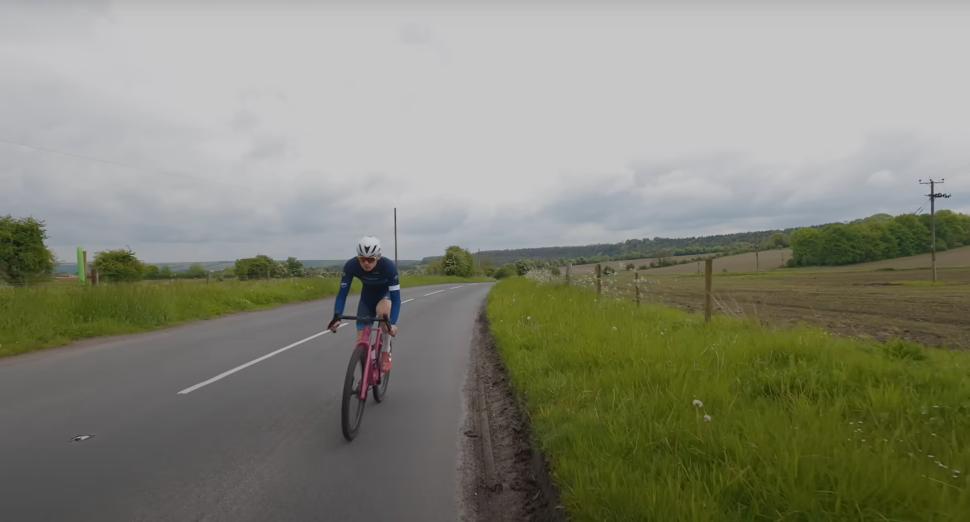
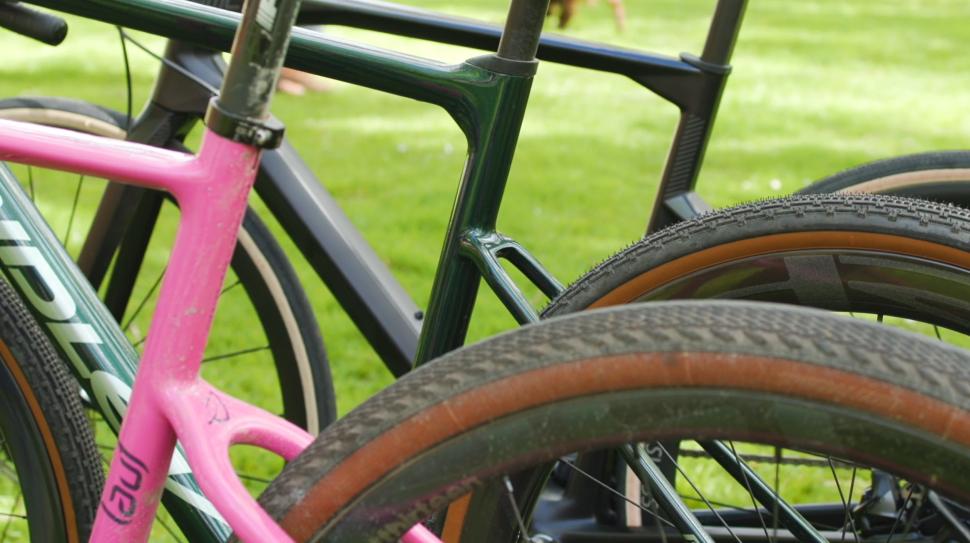
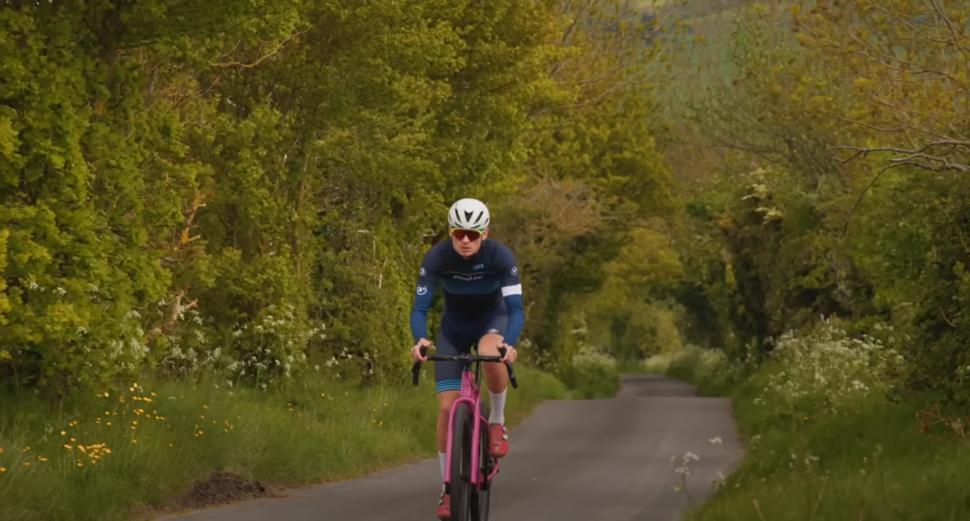

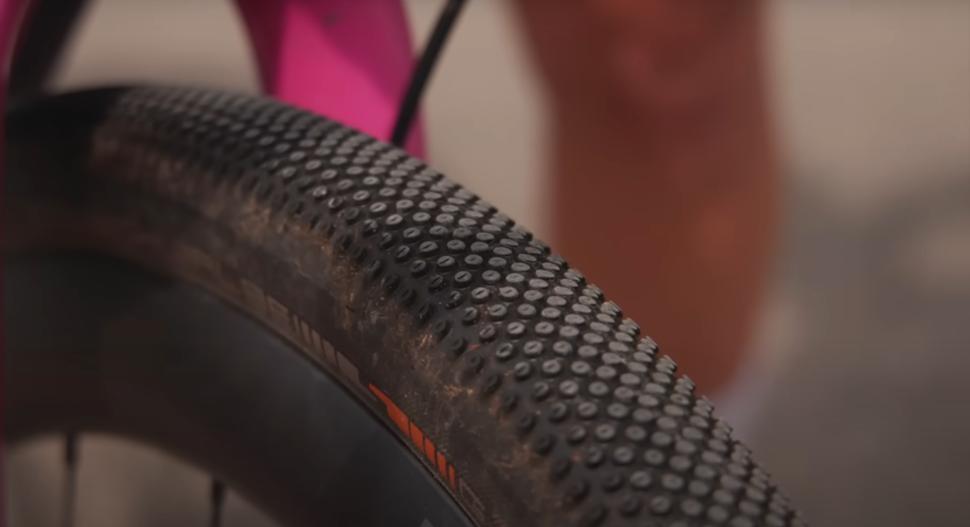



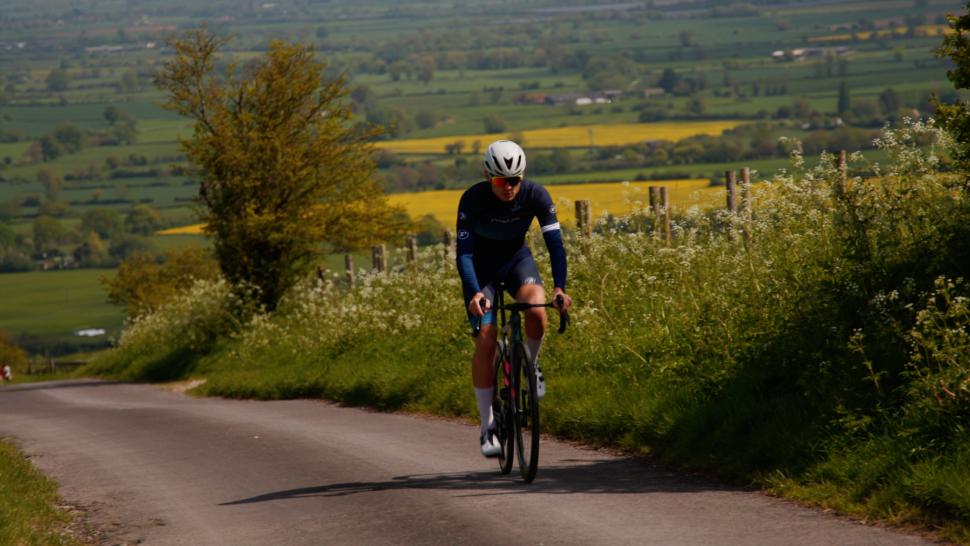
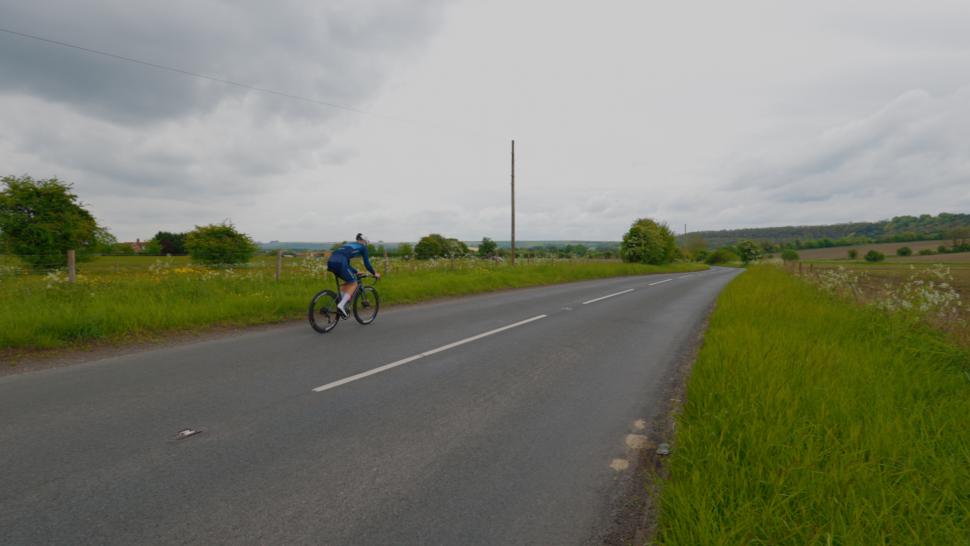
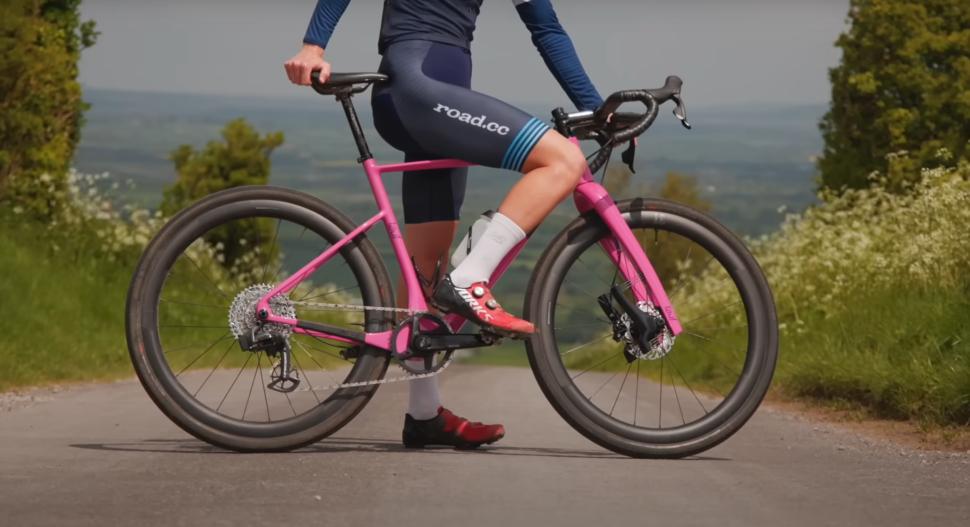
Add new comment
34 comments
You should re-do the test but put road tyres on the gravel bike.
Agreed.
My road bike is a gravel bike with a set of deep wheels and road tires. It's marginally slower than my cycling buddies Scott aero bike when free-wheeling down hill and spins out at around 54kph, but otherwise I don't think there is a huge amount in it.
This is my n=1 too. 650b for gravel. 700c deep wheels for road. My Strava PR's tell that the conditions on the day make far more difference than the bike set up.
I haven't put deep road wheels on my gravel bike (yet 😇) but commuting home in road mode (30mm g-one speeds on hunt 4seasons) I set a PB on a segment I've also done on my deep-wheeled road bike. The tailwind I think was the decisive factor
Pages